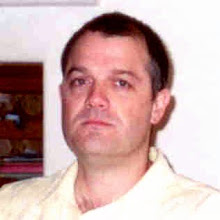A shining example of using the sun’s energy to heat, cool and light the homes and businesses of a desert community in California is poised to power up next year. It’s due in part to the emergence of a technology that uses refraction rather than reflection to produce solar power on a utility-size scale at half the price of photovoltaic technology. But major credit also goes to the pioneering efforts of REDCO, a privately held company, which Ryan Davies established last year to unite free-market concepts with sound environmental policy. The Energy Report caught up with Ryan in the midst of Solar Power International 2009, North America’s largest B2B solar industry event. The event in Anaheim was about 250 miles from the forward-thinking community of Needles, where Ryan’s company is awaiting permit approvals to build a solar thermal plant that will provide peak power to some 2,500 homes.
The Energy Report: Let’s begin with a little thumbnail of REDCO—what your company is and what you do.
Ryan Davies: Sure. REDCO—the Renewable Energy Development Company—is a developer of renewable energy projects. We have a particular focus on wind and solar. We look for good pieces of land that have a strong wind and/or good solar resource and that have good proximity to transmission lines. Sometimes we do joint-venture projects, sometimes we sell projects; but, for the most part, we like to own and operate our own developments.
TER: What brought you to the solar arena? Why do you see solar as a great place for investors to be or for energy to be created?
RD: We have an abundance of sun, and our ability to harness the sun’s energy and create electricity is a pretty remarkable opportunity. The primary demand for power generation or power consumption is during the peak hours of the day; it’s called peak power. That’s when usage of electricity is the highest and also when the cost of the electricity is the highest. So utility companies are constantly looking for ways to increase that peak supply of power.
Because it’s an intermittent power source—wind, sun, etc.—solar is not the answer. But it is an important part of the answer. It doesn’t provide 24-hour-a-day, 7-day-a-week power. What is unique about solar is not only is it renewable but it also provides power during the peak periods of the day, when the sun is shining, which is very valuable to utility companies.
Read more: http://jutiagroup.com/2009/11/07/ryan-davies-finds-hot-technology-produces-solar-power-for-half-the-price/
Want to help with Global-Warming? Please visit http://www.whiteearth.org
Become a fan of the Facebook page http://www.facebook.com/whiteearthorg or http://www.facebook.com/whiteearth
Become a friend on Facebook page http://www.facebook.com/christopherbeau
Follow me on Twitter http://www.twitter.com/christopherbeau
Help with supporting WhiteEarth.org by buying art on http://www.artsymphony.com 100% of proceeds go to WhiteEarth


No comments:
Post a Comment